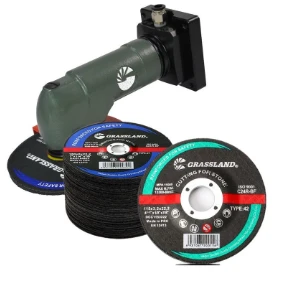The Essential Guide to Metal Sanding Discs for Grinders
When it comes to metalworking, achieving a smooth and polished finish is crucial for both aesthetics and functionality. One of the key tools in this process is the metal sanding disc, specifically designed for use with grinders. These discs come in various materials, grits, and sizes, making them versatile tools in any workshop setting. In this guide, we will explore the types of metal sanding discs available, their uses, and tips for selecting the right one for your metalworking project.
Understanding Metal Sanding Discs
Metal sanding discs are circular abrasives affixed to a backing material, which can be attached to a handheld or bench grinder. They are essential in processes such as grinding, polishing, deburring, and finishing metal surfaces. The primary materials for these discs include aluminum oxide, zirconia, and ceramic, each providing unique advantages suited for different applications.
1. Aluminum Oxide Discs These are the most common type of sanding discs used for metalwork. They are durable and ideal for both ferrous and non-ferrous metals. The versatility of aluminum oxide makes these discs an excellent choice for general grinding and finishing tasks.
2. Zirconia Discs Suitable for heavy grinding and stock removal, zirconia discs are tougher than aluminum oxide and can withstand higher temperatures. These discs are perfect for grinding harder metals and are often used in industrial applications where durability is essential.
3. Ceramic Discs Known for their aggressive cutting capabilities, ceramic sanding discs excel in high-performance applications. They are ideal for high-speed grinding and are particularly effective on stainless steel and other tough materials.
Selecting the Right Grit
Choosing the right grit is crucial for achieving the desired finish on your metal surfaces. Grit refers to the size of the abrasive particles on the disc, which impacts the aggressiveness of the sanding action. Discs typically range from 40 grit (coarse) to 3000 grit (very fine).
metal sanding disc for grinder

- Coarse Grit (40-80) Ideal for heavy stock removal and initial grinding on rough surfaces. - Medium Grit (120-220) Suitable for refining surfaces and removing scratches from the coarse grit stage. - Fine Grit (320 and above) Used for finishing and polishing, ensuring a smooth and shiny surface.
Tips for Effective Use
1. Proper Attachment Ensure that the sanding disc is correctly attached to the grinder. A loose disc can be dangerous and lead to uneven sanding.
2. Speed and Pressure Use the grinder at the appropriate speed setting as per the manufacturer's recommendations. Applying excessive pressure can cause the disc to wear out quickly and may lead to overheating the metal surface.
3. Movement Technique Employ a consistent motion to avoid gouging the material. Moving in circular, sweeping motions can help distribute the wear on the disc evenly and promote a uniform finish.
4. Cool Down Metal can become very hot during sanding. Take breaks to allow both the metal and the disc to cool down, preventing distortion of the metal and extending the life of the sanding disc.
5. Safety Precautions Always wear appropriate personal protective equipment (PPE), including safety goggles, gloves, and a dust mask, to protect against debris and dust generated during the sanding process.
Conclusion
Metal sanding discs are invaluable tools for anyone working with metal, whether in a professional setting or DIY projects. Understanding the various types of discs, selecting the right grit, and employing effective techniques can significantly enhance the quality of your work. With the right tools and knowledge, you can achieve a flawless finish that not only looks good but also prolongs the life of your metal components. As you dive into your next metalworking project, remember to prioritize safety and precision for the best results.
Post time:Dec - 23 - 2024

















